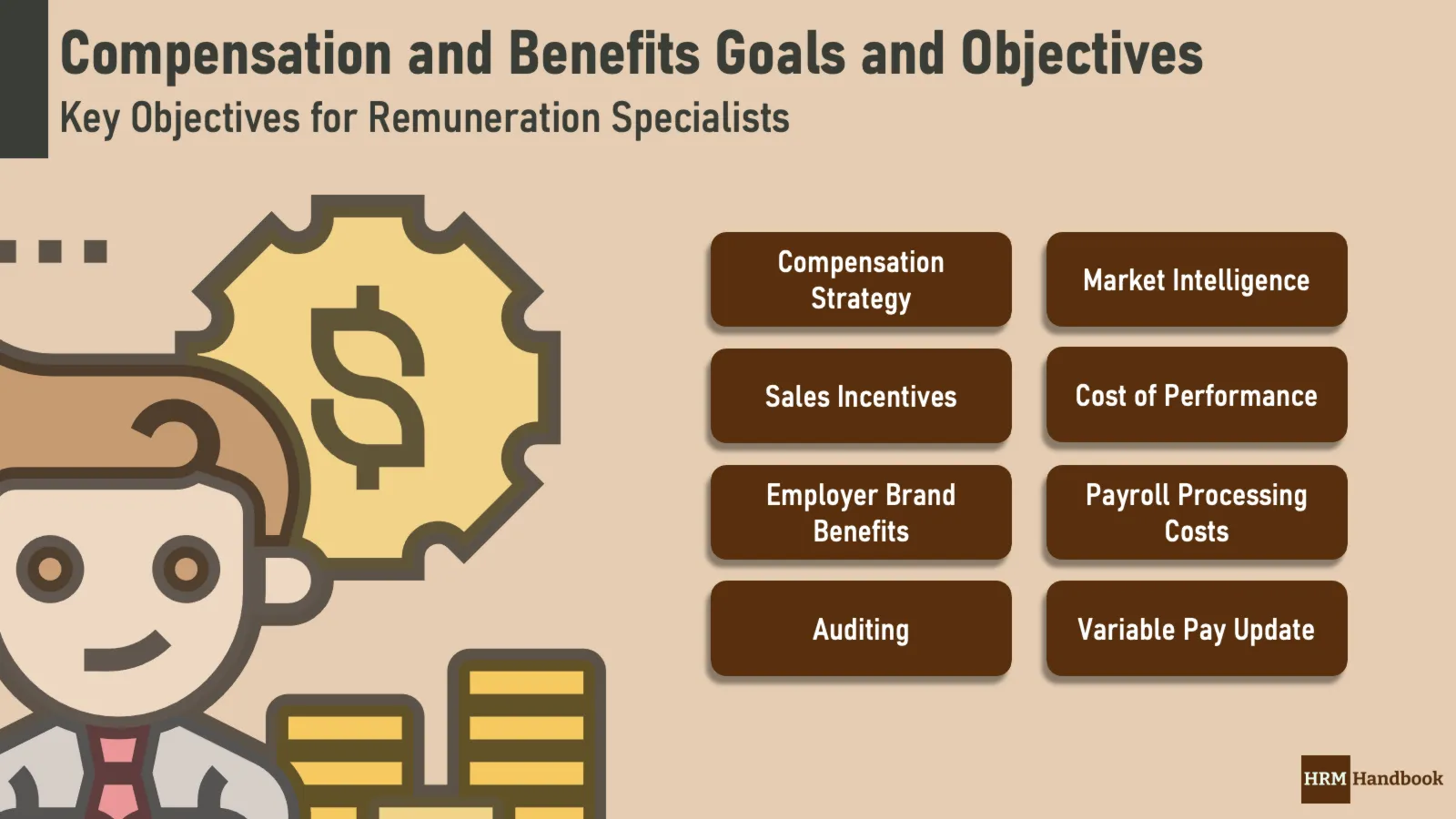Compensation and Benefits CoE Goals and Objectives
The Compensation and Benefits CoE is one of the most strategic HR units. It influences the satisfaction of employees, the performance, the productivity and overall costs and expenses of the organization. Setting the Goals and Objectives for Compensation&Benefits employees is crucial for the development of the modern Human Resources Management.
The job of C&B CoE is mainly strategic as the center designs and implements various remuneration policies, and it does not run many tactical or administrative processes.
The Compensation and Benefits goals need to be derived from the overall business strategy. The key driving documents for C&B CoE are the compensation strategy and the compensation policy. The strategy paper defines key remuneration components and the role of the component in the system. The policy is the tactical document describing eligibility and all processes around, including the audit trail.
The objectives need to be derived from both documents and focused on changes and strengthening of remuneration practices in the organization. There is always space to strengthen the role of the particular element. They need should be usually derived from the feedback of users and the overall business strategy. The HR Management Team has to recognize priorities and benefits for the company, and it has to set compensation goals and objectives with all potential costs and benefits in mind.
The most common goals for C&B Function can be divided into four functional areas:
- review or redesign of the compensation strategy;
- simplification of pay structures and processes;
- recognition of high potentials and retention of key employees;
- benefits policies and engagement of employees.
The most common goal for C&B department is about the review and redesign of the compensation strategy. The business environment changes rapidly, and the overall business targets are adjusted on a yearly basis. The Compensation and Benefits processes, procedures and practices need to follow such changes to stay competitive and reasonable for managers and employees. Each significant change in the organization should cause a revision of all C&B policies, including Compensation Policy.

The regular review of pay practices and policies is the most common goal. The leadership team can discuss the results of the last year and propose useful changes to remuneration practices. However, they have to see details and proposals. It is the role of Compensation and Benefits to present results and offer new solutions that can stimulate the performance and productivity of employees.
The simplification of reward policies is another common goal for C&B Managers and Specialists. The compensation plans are complex and challenging to understand. Majority of managers do not know all details, and they breach policies because they do not understand the complexity built into them. The simplification of HR procedures and policies is always a sound proposal.
Another popular objective for Compensation and Benefits is the analysis of the current market practice and all modern trends in Reward and Recognition. New businesses invent innovative ways how to recognize top talents and how to offer the highly competitive compensation package. It is always good to look at the market practice and bring best practices to the organization. However, this goal should be always accompanied by the relevant Cost and Benefit Analysis. Additionally, the company should not just add new elements; it has to discontinue some reward practices, as well.
Last, C&B CoE has to support other units in Human Resources. It has to design a competitive pay package for newcomers and attractive packages for high potentials in the organization. It has to manage costs and keep costs in line with the growth of the business.